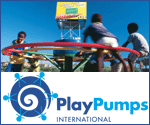Focus
One of the most difficult things when preparing to work on a project like this is access to accurate information. There are so many individuals and organizations out there sharing their take on what is happening in Sudan. When it comes to issues around the globe, outside entities and nations often display inaction followed by incorrect action.
As a college student preparing to join the village-building effort, my views began very emotionally-charged. The difficult reality here is that I am not a government or a military. I am a student. I want to help build homes for people who have none. So that is where the focus must lay. Outside organizations that try to work in Sudan often find themselves kept out because in addition to a focus on something like building homes or providing aid, they also launch charged political actions.
In relation to work in Sudan, many organizations and individuals play many different roles. But again, the reality here is that we cannot enter any country we wish and begin achieving our goals immediately. History has shown us that diplomacy actually resolves situations far more quickly than aggression. Whenever possible, we must work with all parties involved to make the accomplishment of our goals as sustainable as possible. For us, that means maintaining a focus on building sustainable villages, and not imposing Western ideas on the villagers for example.
To find a little clarity of information regarding Sudan, I would recommend The Root Causes of Sudan's Civil Wars by Douglas Hamilton Johnson. It is often given particularly to diplomats and government officials who need to understand the big picture of Sudan's history and environment. I found it a little biased in favor of the south, but overall, it was very useful.











